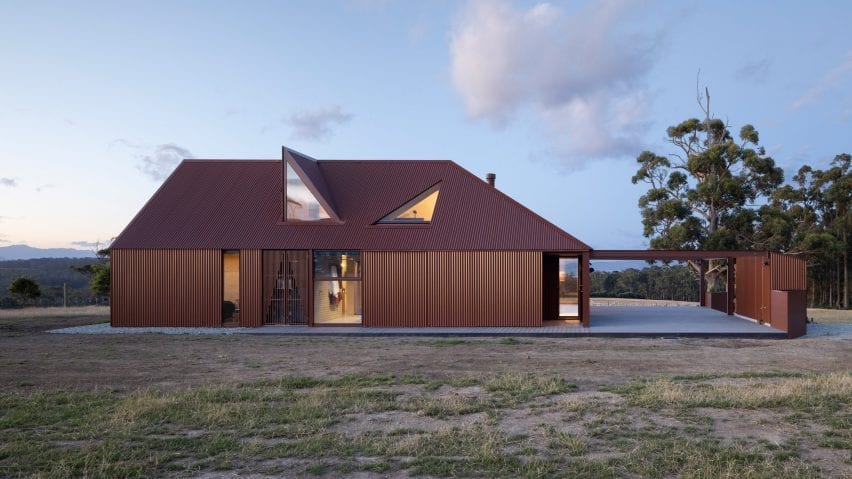
Coopworth residence is a modern take on a traditional Tasmanian farmhouse
Melbourne firm FMD Architects has completed a farmhouse in rural Tasmania featuring a plywood-lined interior and corrugated metal cladding that references vernacular agricultural buildings.
The Coopworth house, which is located on Bruny Island off the southeastern coast of Tasmania, is named after the Coopworth sheep reared by the property's owners.
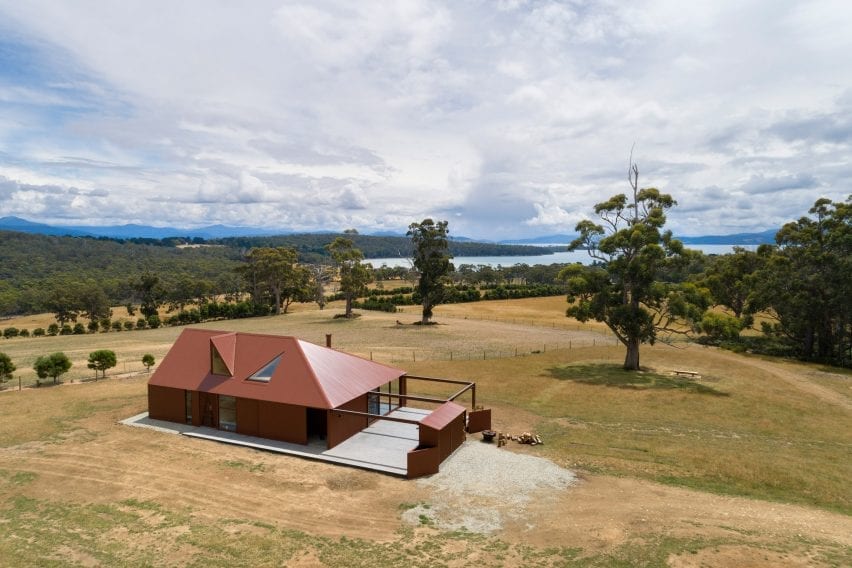
The house sits atop a hill surrounded by arable farmland and was designed by FMD Architects as a contemporary take on the farmhouses and shacks found throughout the area.
"The site's resident Coopworth sheep, the wide-ranging views to the water and mountain ranges beyond, as well as the weathering red lead shacks dotted over the island provide an ever-changing landscape with which the house converses," the architects said.
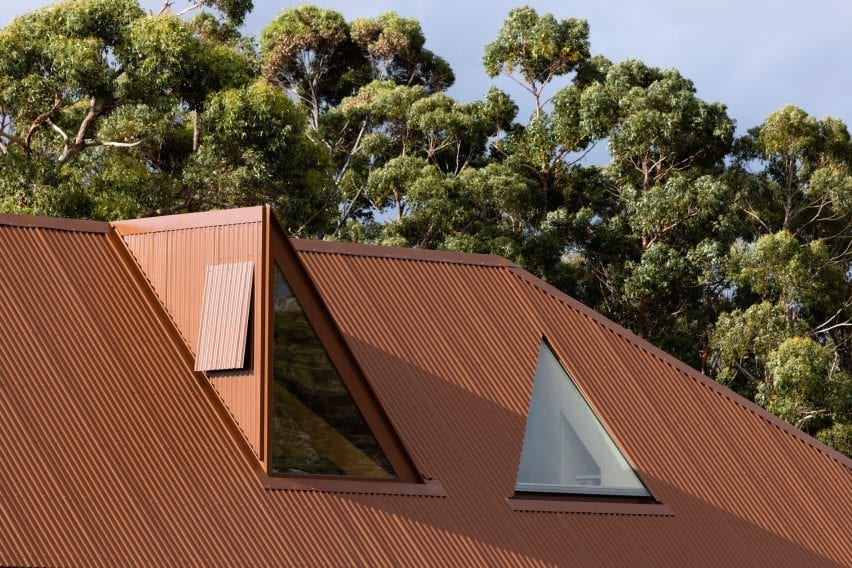
The building occupies a compact footprint to retain as much land as possible, and its design seeks to create spaces with generous proportions that make the most of the internal volume.
The main living areas feature sloping ceilings that follow the angled roofline. The space is lined with plywood panels, except for parts of the ceiling that show off wool insulation sourced from the farm's sheep.
"Sealed with clear, polycarbonate corrugated sheeting, the wool adds to the thermal performance, while celebrating the agricultural connections as an abstract wool fresco," FMD Architects added.
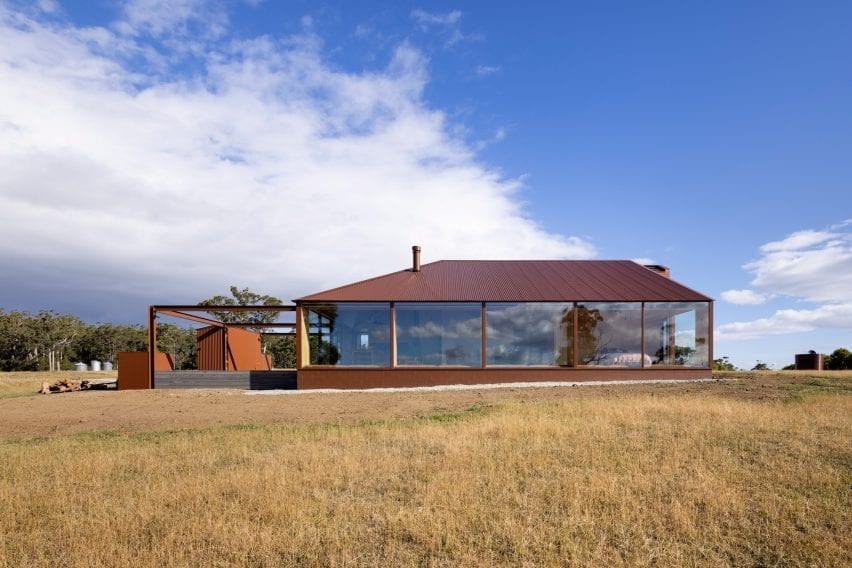
Coopworth's northern elevation incorporates full-height frameless windows that create a strong connection with the outdoors.
The glazing is pushed to the edge of the building envelope, where it siths within timber-lined niches that provide places to relax while creating a feeling of being immersed in the landscape.
The plywood-clad living area contains a wood-burning stove and a low storage unit that separates the kitchen and dining space from the lounge.
Two bedrooms are positioned at the western end of the ground floor, with a laundry room and bathroom situated behind the central stair.
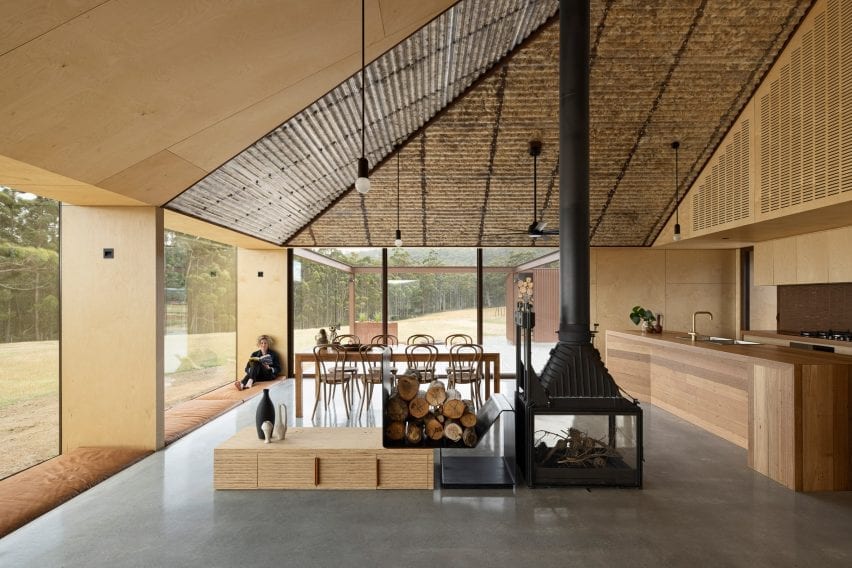
The main bathroom features a sunken bath incorporated into a brick-tiled volume that evokes the chimney stacks found on vernacular buildings.
A large window flanking the bath provides the bather with views of the surrounding paddock and the bay beyond.
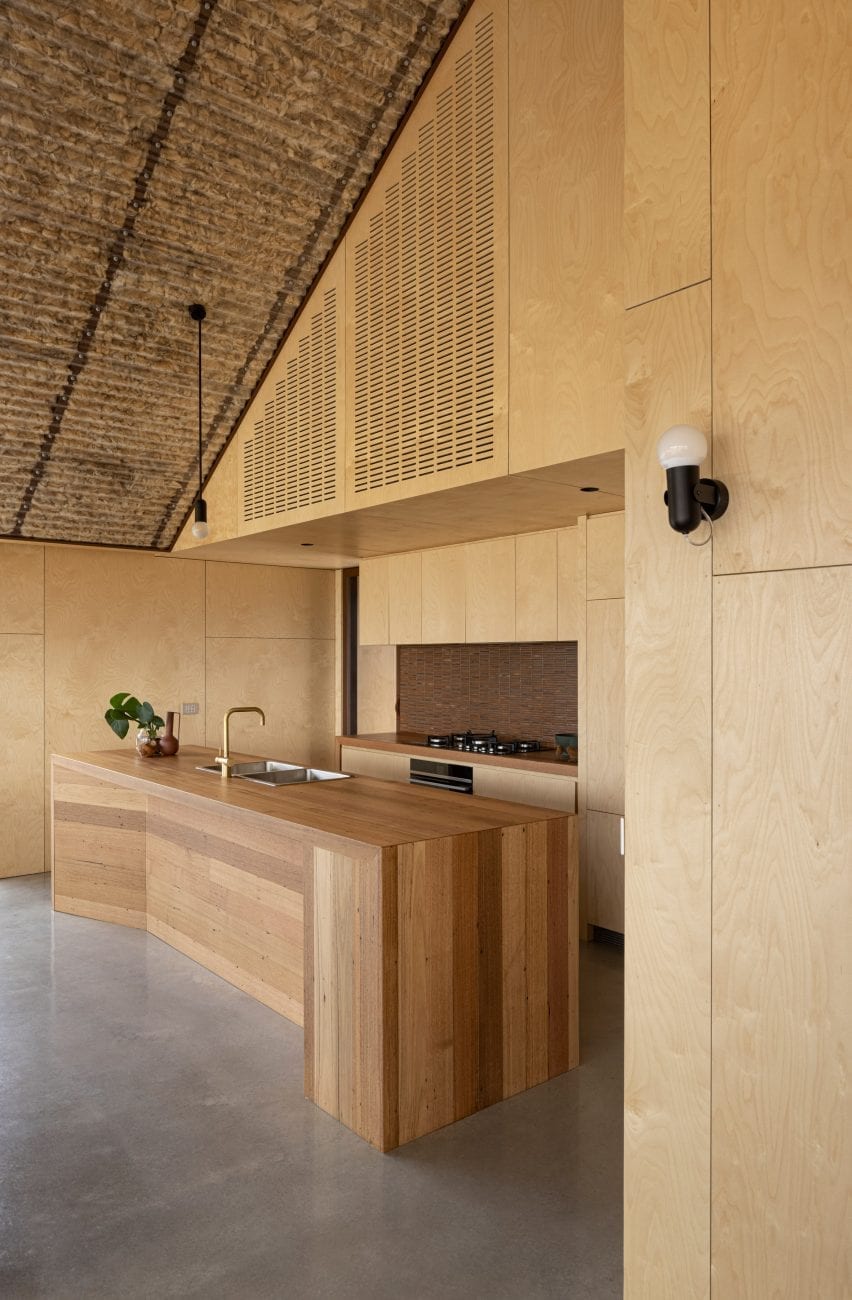
The staircase provides access to a mezzanine study area and attic bedroom. Both spaces are slotted in beneath the steeply pitched roof and receive daylight from angular openings.
Coopworth is designed for two occupants, but can accommodate family and friends thanks to various informal sleeping options inspired by Australian verandah sleepouts and caravan bunk beds.
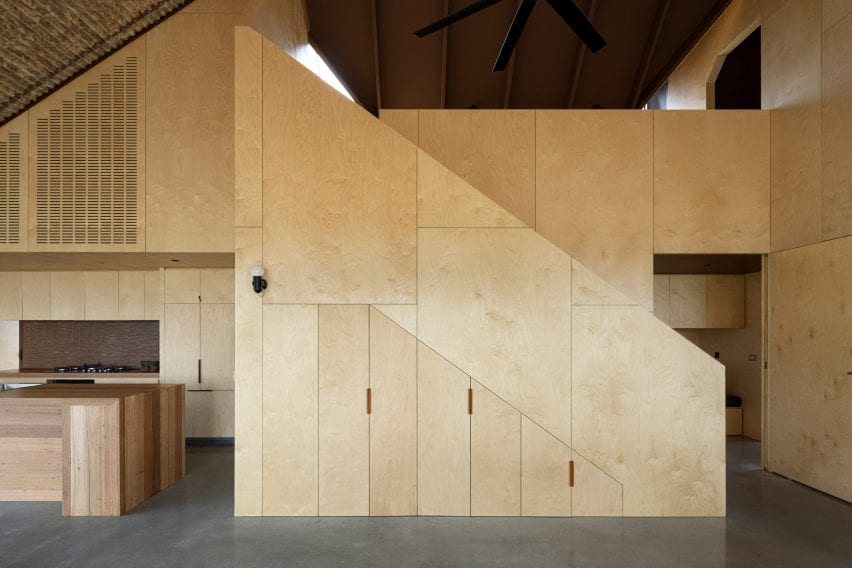
Sunken beds incorporated into the window bays can be used as sleeping mats, while a single bed is hidden within a wall of plywood joinery next to the staircase.
FMD Architects is headed by Fiona Dunin and aims to create buildings informed by their context and clients.

The studio works predominantly on boutique commercial, hospitality and residential projects. Its previous work includes a house in Melbourne featuring wooden columns and beams inspired by sewing details.
Photography is by Dianna Snape.